Free and Forced Rossby Waves in the Western South China Sea Inferred from Jason-1 Satellite Altimetry Data
Abstract
:1. Introduction
2. Data and method
3. Results and Discussion
3.1 Identifying intra-seasonal oscillation
3.2 Case study
3.4 Hypothesis
Acknowledgments
References
- Chao, S.Y.; Shaw, P.T. Deep water ventilation in the South China Sea. Deep-Sea Res. 1996, 43(4), 445–466. [Google Scholar]
- Chu, P.C.; Fang, C.L. Observed Rossby waves in the South China Sea from satellite altimetry data. Proceedings of SPIE Conference on Remote Sensing of the Ocean and Sea Ice, Barcelona, Spain, September 8-12, 2003.
- Gan, J.; Li, H.; Curchitser, E.N.; Haidvogel, D.B. Modeling South China Sea circulation: Response to seasonal forcing regimes. J. Geophys. Res. 2006, 111, C06034. [Google Scholar] [CrossRef]
- Gao, R.Z.; Zhou, F.X. Monsoonal characteristics revealed by intraseasonal variability of sea surface temperature in the South China Sea. Geophys. Res. Lett. 2002, 29(8), 1222. [Google Scholar] [CrossRef]
- Isoguchio, O.; Kawamura, H. MJO- related summer cooling and phytoplankton blooms in the South China Sea in recent years. Geophys. Res. Lett. 2006, 33, L16615. [Google Scholar] [CrossRef]
- Kajikawa, Y.; Yasunari, T. Interannual variability of the 10-25- and 30-60-day variation over the South China Sea during boreal summer. Geophys. Res. Lett. 2005, 32, L04710. [Google Scholar] [CrossRef]
- Kawamura, R. Intraseasonal variability of sea surface temperatures of over the tropical western Pacific. J. Meteor. Soc. Jpn. 1988, 66, 1007–1012. [Google Scholar]
- Krishnamurti, T.N.; Oosterhof, D.K.; Mehta, A.V. Air-sea interaction on time scale of 30-50 days. J. Atmos. Sci. 1988, 45, 1304–1322. [Google Scholar]
- Liu, Q.Y.; Jia, Y.L.; Liu, P.H.; Wang, Q.; Chu, P.C. Seasonal and intraseasonal thermocline variability in the central South China Sea. Geophys. Res. Lett. 2001, 28(23), 4467–4470. [Google Scholar]
- Liu, Z.Y.; Yang, H.J.; Liu, Q. Regional dynamics of seasonal variability of sea surface height in the South China Sea. J. Phys. Oceanogr. 2001, 31(1), 272–284. [Google Scholar]
- Madden, R.D.; Julian, P. Description of global scale circulation cell in the tropics with 40-50-day period. J. Atmos Sci. 1972, 29, 1109–1123. [Google Scholar]
- Mao, J.; Chan, J.C.L. Intraseasonal variability of the South China Sea summer monsoon. J. Clim. 2005, 18, 2388–2402. [Google Scholar]
- Matthews, A.J.; Hoskins, B.J.; Slingo, J.M.; Blackburn, M. Development of convection along the SPCZ within a Madden-Julian oscillation. Quart. J. Roy. Meteor. Soc. 1996, 122, 669–688. [Google Scholar]
- Qu, T. Upper-layer circulation in the South China Sea. J. Phys. Oceanogr. 2000, 30(6), 1450–1460. [Google Scholar]
- Sengupta, D.; Goswami, B.N.; Senan, R. Coherent intraseasonal oscillations of ocean and atmosphere during the Asian summer monsoon. Geophys. Res. Lett. 2001, 20(21), 4127–4130. [Google Scholar]
- Wang, G.H.; Su, J.L.; Chu, P.C. Mesoscale eddies in the South China Sea observed with altimeter data. Geophys. Res. Lett. 2003, 30(21), 2121. [Google Scholar] [CrossRef]
- Wang, G.H.; Chen, D.; Su, J.L. Generation and life cycle of the dipole in the South China Sea summer circulation. J. Geophys. Res. 2006, 111, C06002. [Google Scholar]
- Wu, C.R.; Tang, T.Y.; Lin, S.F. Intra-seasonal variation in the velocity field of the northeastern South China Sea. Cont. Shelf Res. 2005, 25, 2075–2083. [Google Scholar]
- Wyrtki, K. Physical oceanography of the Southeast Asia waters. NAGA Report 2 1961, p1–195. [Google Scholar]
- Xie, Q.; Wu, X.Y.; Yuan, W.; Wang, D.; Xie, S-P. Life cycle of intraseasonal oscillation of summer sea surface temperature in the western South China Sea. Acta Oceanol. Sin. 2007, 27(3), 1–8. [Google Scholar]
- Xie, S-P.; Xie, Q.; Wang, D.; Liu, W.T. Summer upwelling in the South China Sea and its role in regional climate variations. J. Geophys. Res. 2003, 108(C8). [Google Scholar] [CrossRef]
- Xie, S-P.; Chang, C.H.; Xie, Q.; Wang, D. Intraseasonal variability in the summer South China Sea: The wind jet, cold filament, and recirculations. J. Geophys. Res. 2007, 112. [Google Scholar] [CrossRef]
- Yang, H.J.; Liu, Q.Y. Forced Rossby wave in the northern South China Sea. Deep-Sea Res. I 2003, 50, 917–926. [Google Scholar]
- Zhou, F.X.; Ding, J.; Yu, S.Y. Sea surface temperature intraseasonal variability in the South China Sea. J. Ocean Univ. Qingdao 1995, 25, 1–6. [Google Scholar]
- Zhou, F.X.; Gao, R.Z. Intraseasonal variability of the subsurface temperature observed in the South China Sea. Chin. Sci. Bull. 2002, 47, 337–342. [Google Scholar]
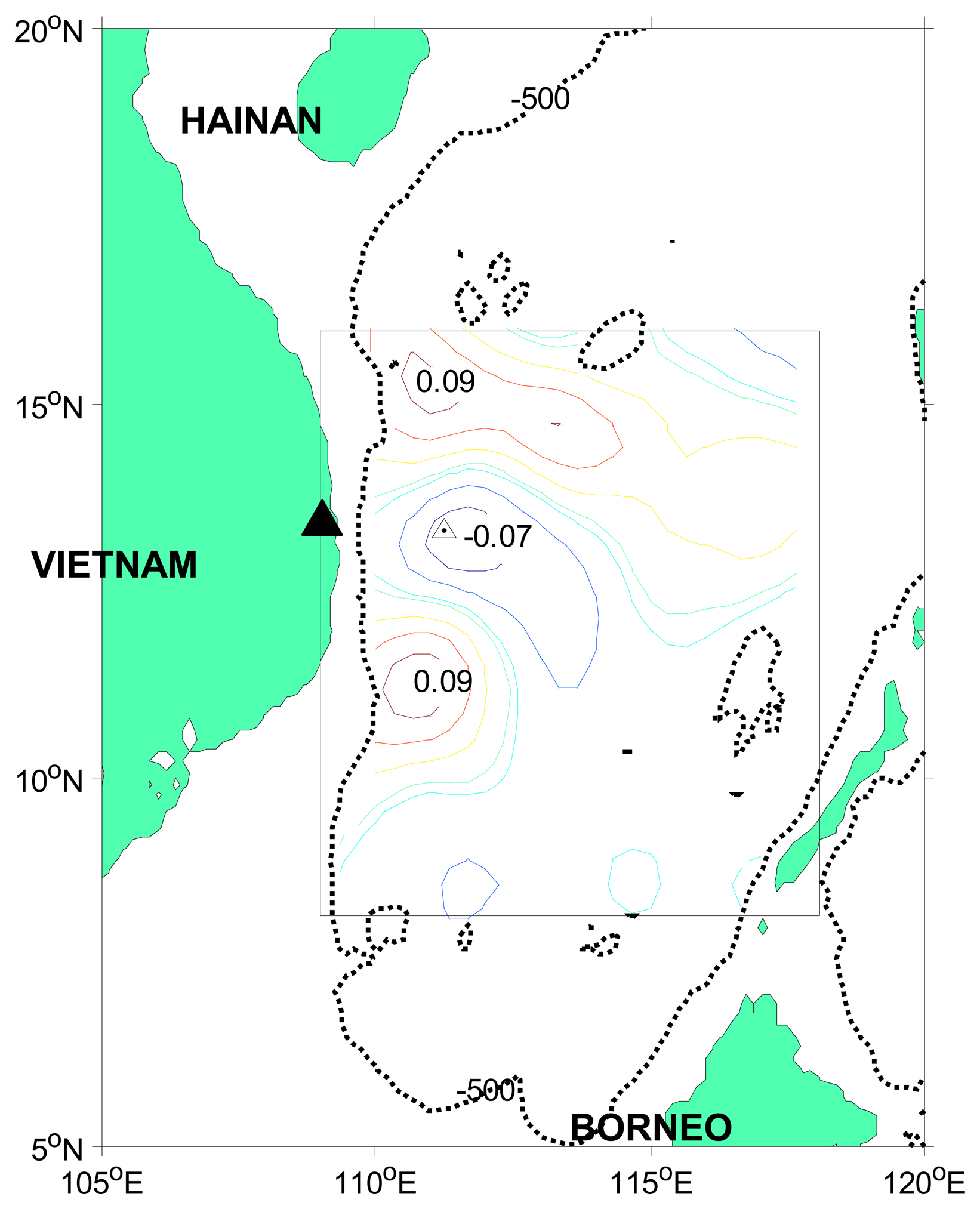
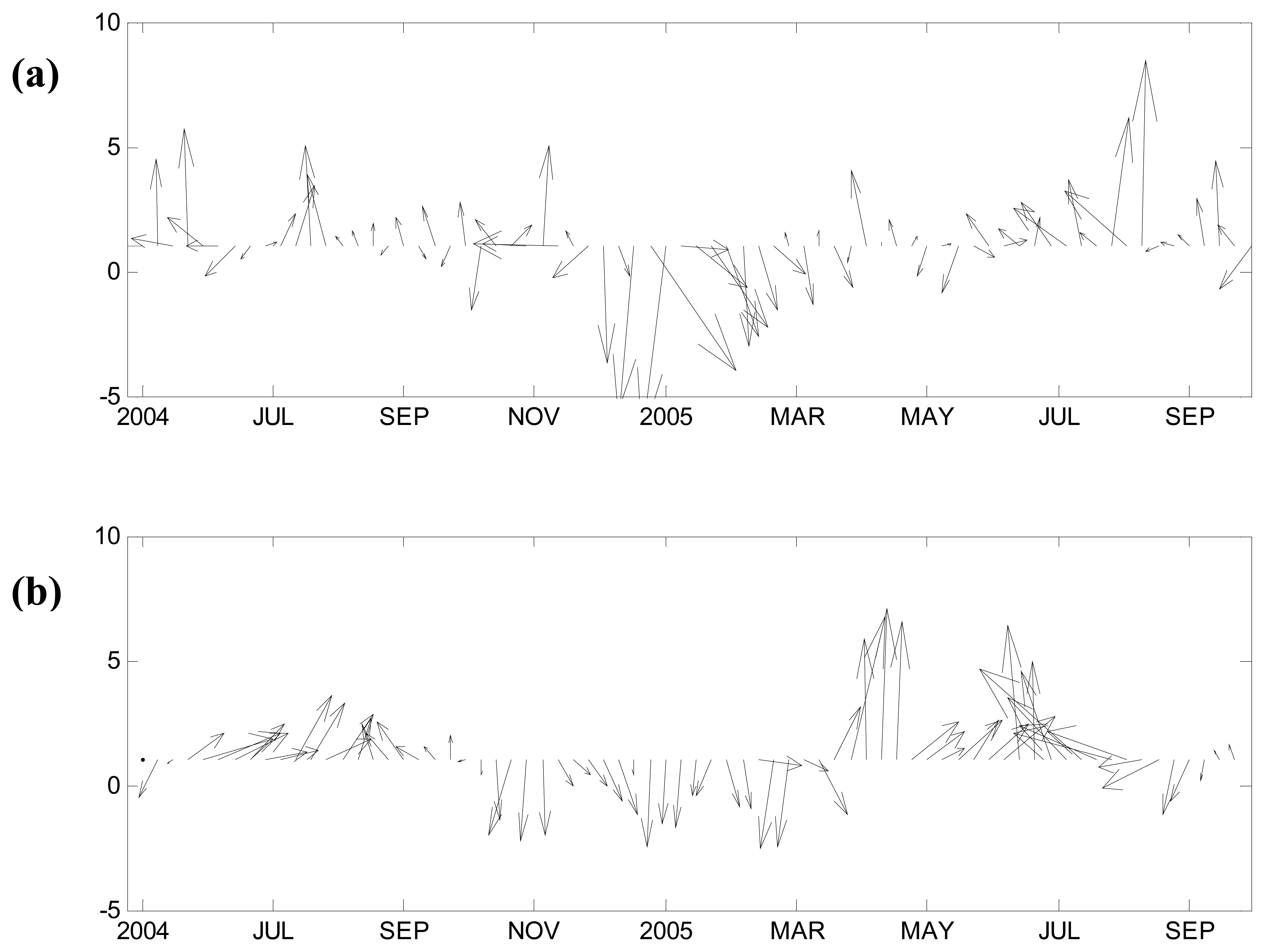
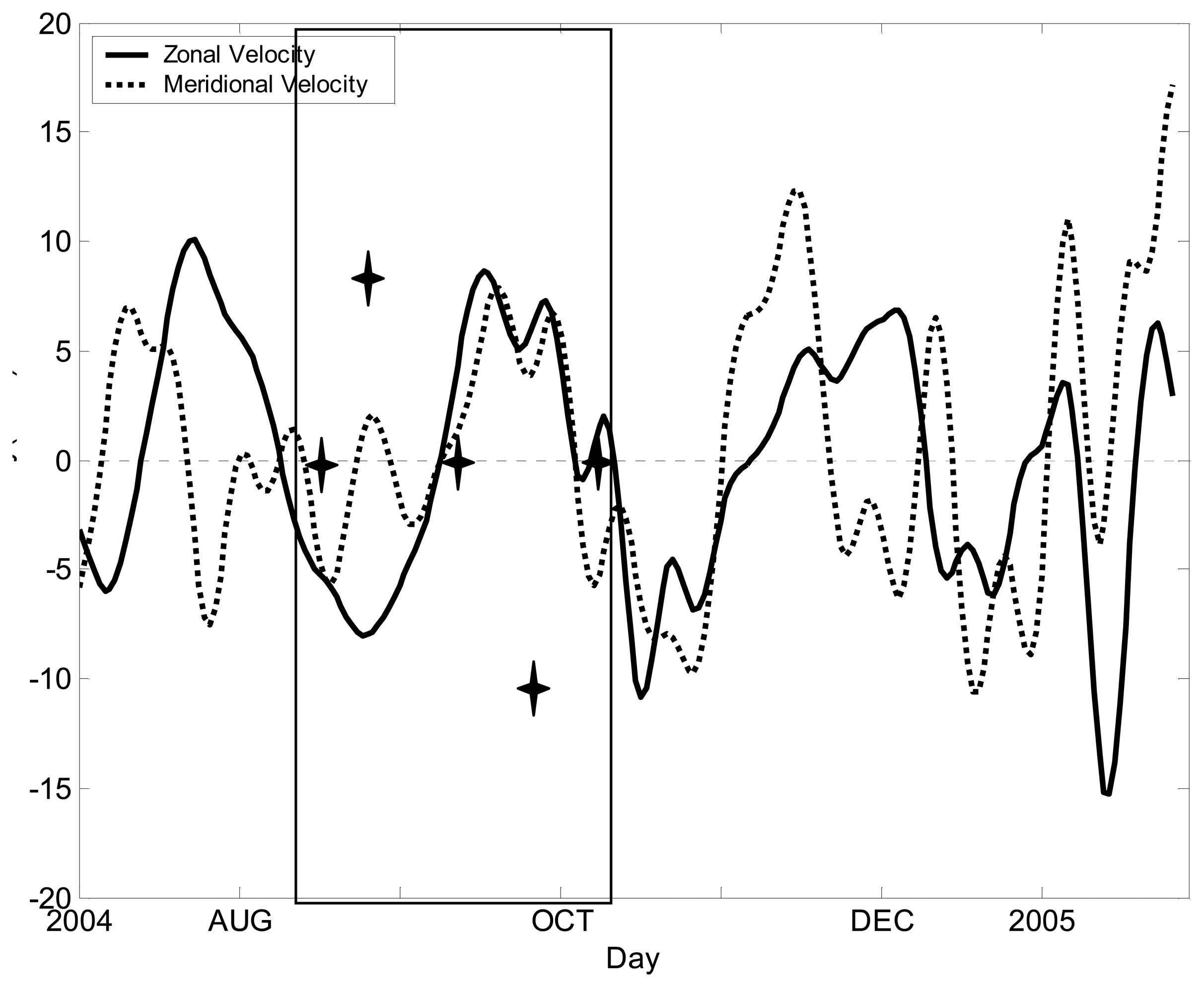

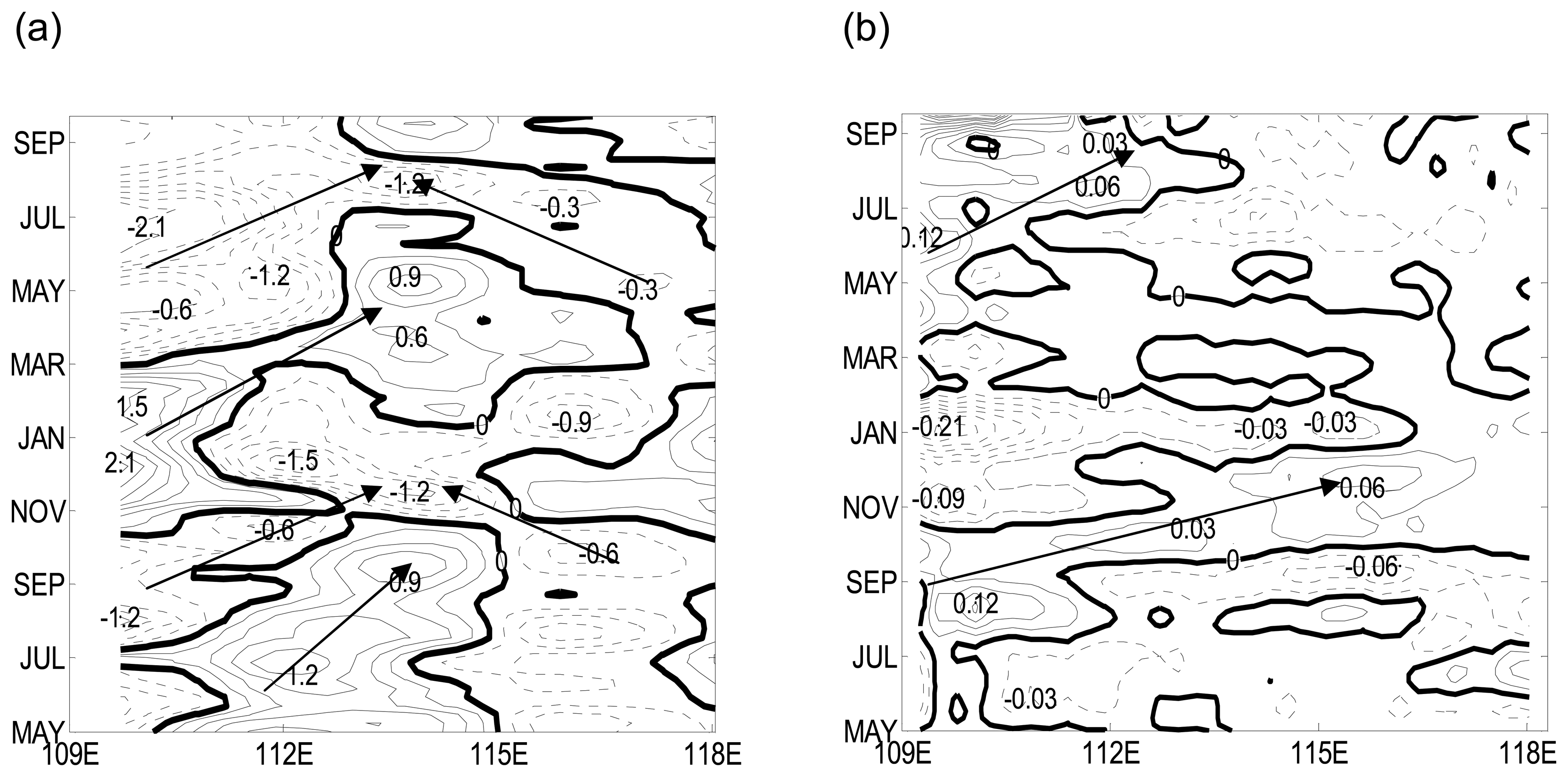
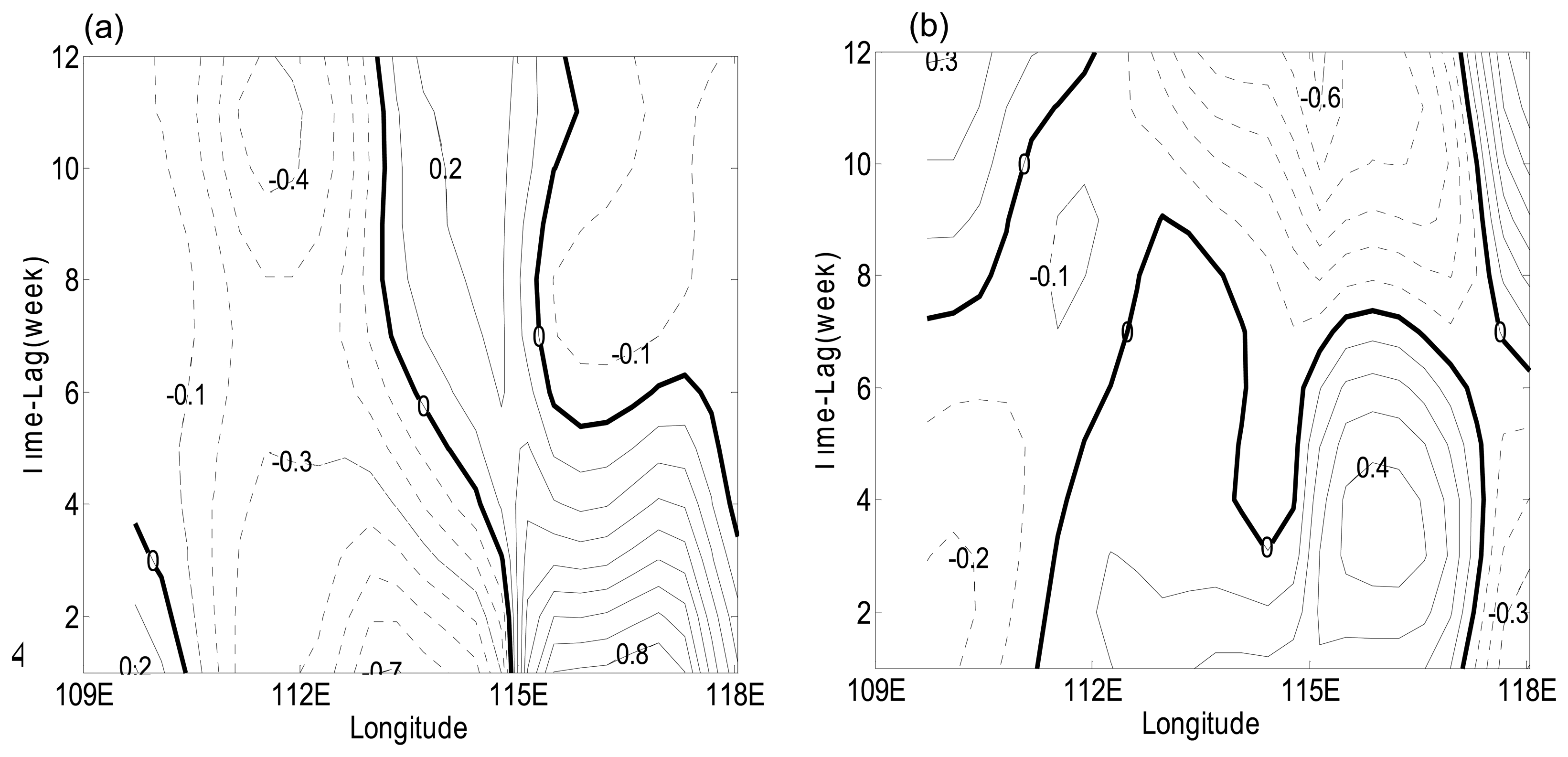
| EOF modes | Percentage of the total variance | Accumulative percentage |
|---|---|---|
| 1 | 29.9% | 29.9% |
| 2 | 16.7% | 46.6% |
| 3 | 12.1% | 58.7% |
| 4 | 8.4% | 67.1% |
| 5 | 5.3% | 72.4% |
© 2008 by the authors; licensee Molecular Diversity Preservation International, Basel, Switzerland. This article is an open-access article distributed under the terms and conditions of the Creative Commons Attribution license ( http://creativecommons.org/licenses/by/3.0/).
Share and Cite
Wu, X.; Xie, Q.; He, Z.; Wang, D. Free and Forced Rossby Waves in the Western South China Sea Inferred from Jason-1 Satellite Altimetry Data. Sensors 2008, 8, 3633-3642. https://doi.org/10.3390/s8063633
Wu X, Xie Q, He Z, Wang D. Free and Forced Rossby Waves in the Western South China Sea Inferred from Jason-1 Satellite Altimetry Data. Sensors. 2008; 8(6):3633-3642. https://doi.org/10.3390/s8063633
Chicago/Turabian StyleWu, Xiangyu, Qiang Xie, Zhigang He, and Dongxiao Wang. 2008. "Free and Forced Rossby Waves in the Western South China Sea Inferred from Jason-1 Satellite Altimetry Data" Sensors 8, no. 6: 3633-3642. https://doi.org/10.3390/s8063633




